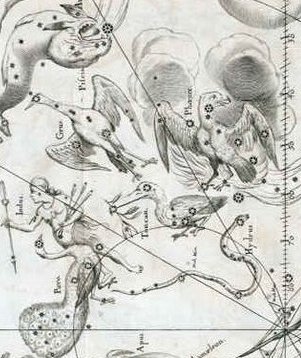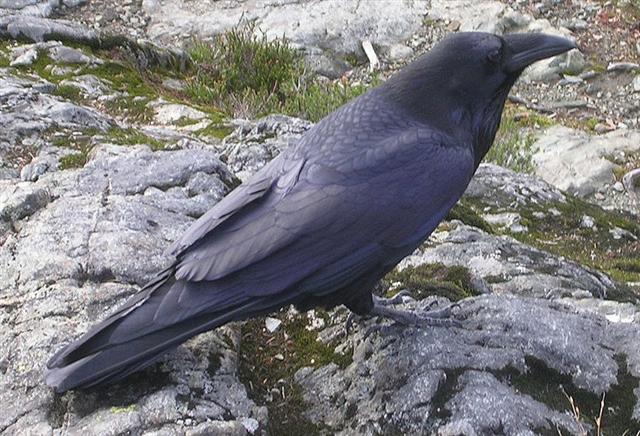There are 392 glyphs on side a and if we should reduce this number with that for the glyphs on the last part of the side, with 107 up to and including Ca14-26, then the remainder becomes 285 (= 365 - 80). In rongorongo times the stars in the Pegasus-Square rose together with the Sun in March and while Sirrah (α Andromedae, the 4th corner of the square) and Caph (β Cassiopeiae) were at 0h the star Algenib Pegasi (γ) determined the Chinese 14th station Wall - and the Porcupine has innumerable 'spikes', tara:
The 27th Hindu nakshatra station was ruled by both Sirrah and Algenib:
Sirrah and Algenib Pegasi had between them the Phoenix star ε which rose at Ca1-1, while Ankaa and κ rose in March 25 (= RA day 5.0 or precisely 5 days counted from 0h). Hevelius has drawn Ankaa (α) at the head of the Phoenix bird and κ at his throat:
At the other side of the sky compared to Caph and Sirrah was ο Virginis.
I suggest the glyphs at the beginning of the text can be aligned with the days from the March equinox, and with the first day measured from 0h noted on the tablet as Ca1-1 (for when the second day March 22 was 'born' at midnight). However, on Easter Island the month March was not in spring but in autumn. Their spring equinox month was September. Therefore they could in March observe the stars close to the Full Moon in order to find out what season the glyphs at the beginning of the text meant for those living north of the equator. And then they would have seen Raven, the Sign of the 'death of summer'.
The Phoenix bird marked the return of 'fire' (Sun) and the black Raven his 'death' - spring equinox respectively autumn equinox. The glyphs at the beginning of line Ca1 can be read either heliacally for those who were living north of the equator or the nakshatra way for those who lived south of the equator. In both cases the glyphs would then depict events in spring:
March was a month of rebirth north of the equator, while south of the equator the heliacal stars of Raven (Corvus) - which were visible close to the Full Moon in March - announced the arrival of spring. Gienah (γ, the brightest of the stars of Raven) rose together with Sun in RA day 185 = 185 days beyond March 21, i.e. in Gregorian day 80 + 185 = 265 (September 22 = equinox). The first week of glyphs ended with a rising kahi fish, which could refer to how the sky was raised up in March north of the equator but which for readers on Easter Island would show the situation in September, when 'sky proppers' were put in place to raise the sky roof. In Ca1-6 was possibly described how earth (left) and dark sky (right) were separated from the 'close embrace' in Ca1-5 (with the sky above inseparable from earth below). This separation could have referred to March 27 (and the situation north of the equator), but would be easier to understand for people on Easter Island if it referred to the 4 + 1 days from the September equinox. 72 * 6 = 432 = 360 + 72. The 13th Hindu nakshatra station Hasta (the hand or fist) was ruled by Gienah (and the rest of the stars in the constellation):
An empty hand was 'zero' for the Polynesians, while a close fist meant a 'full hand'. The Hindu nakshatra system used the Full Moon as a Sign for where Sun was. In September 22 (autumn equinox) there were 100 days to the end of the year and the days of Sun had been counted in full - his remaining days had come down to zero. | ||||||||||||||||||||||||||||||||||||||||||||||||||||||||||||||||||||||||||||||||||||||||||||||||||||||||||||||||||||||||||||||||||||||||||||||||||||||||||||





